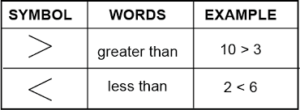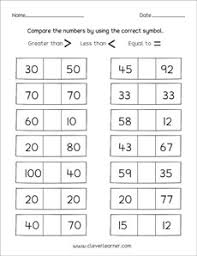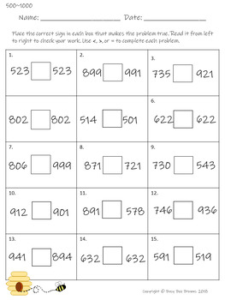Back to: Mathematics Primary 2
HELLO CHILDREN, WELCOME BACK TO CLASS
Numbers are used to show how many there are of something. We’ve been using blocks because it’s easy to see the ones, tens, hundreds, and thousands. Normally we’d be using numbers to show how many children, or apples, or teachers, or friends, or whatever we want to show.
Often, we want to compare numbers.
For example, if John has 5 apples and Suzy has 8 apples, we might want to know who has more apples.
The pictures below show that Suzy has more apples.

When we don’t have a picture to look at we have to use just the numbers. Here are two ways to compare numbers:
- The number you get to first is smaller. 5 comes before 8 so 5 is smaller than 8.
- Use a number line. The greater, or higher number is always further along the line.
Comparing 2-digit numbers
When we compare 2-digit numbers we start by looking at the tens place.

If the tens are greater for one number then that number will be greater.
Let’s compare 62 and 38.

What if the tens are the same?

if the tens are the same, we need to compare the units. The number with more units is greater.
The Greater Than and Less Than Symbols


Example:
Let’s compare 285 and 464.
We start by comparing the hundreds. If one number has more hundreds then it is larger.
464 > 285(464 is greater than 285)
ACTIVITY




It was very helpful
great job. Weldon.
We’re glad you found it helpful😊 For even more class notes, engaging videos, and homework assistance, just download our Mobile App at https://play.google.com/store/apps/details?id=com.afrilearn. It’s packed with resources to help you succeed🌟